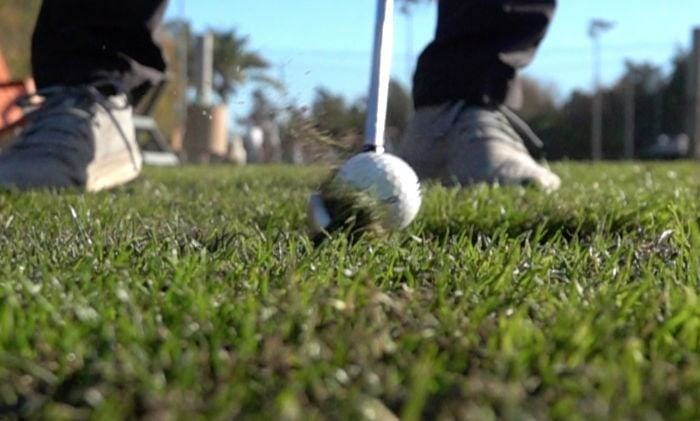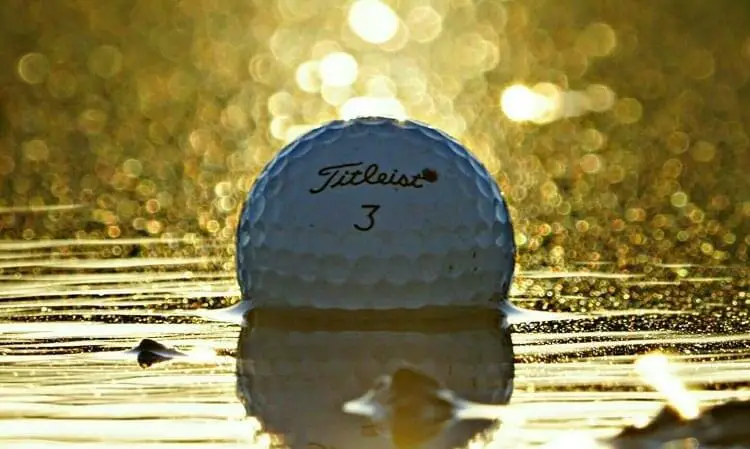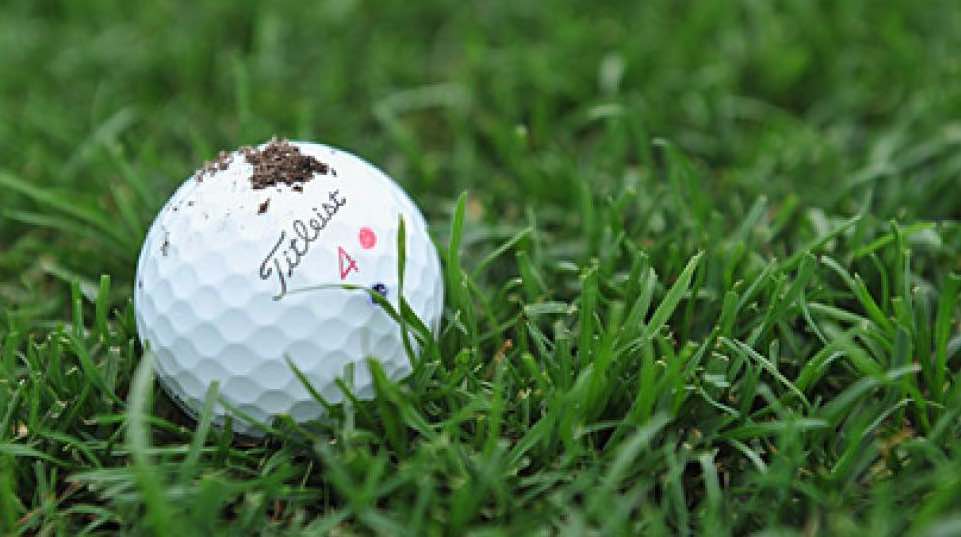When your golfing, mud from the ground might get on your golf ball. Traditional golf tournaments often allow players to pick up these balls then wipe them off if they are wet or dirty.
In this article, we’ll primarily focus on what a mud ball is and how it’s treated in golf.
In Golfing Terms, What is a Mud Ball?

In general, a mudball is a ball that has had exposure to mud. This is not only restricted to mud, sand covering a ball can be called a mudball as well. These are common during the rainy season and wet conditions.
So What Happens with a Mud Ball?

The ball picks up mud and dirt from the ground when it lands on the soggy or soft grass. That’s why muddy balls often occur in conditions that are rainy or have bad weather. (1)
It is because mud balls negatively impact gameplay that they are so dreaded. Mud and debris on your ball can cause extraordinarily different results from how high and far your ball can go based on the severity of the impact. It could also affect how smoothly or sharply it will curve in the air.
Can You Clean Mud Off Your Golf Ball on the Golf Course?

Mud on the golf ball is a controversial subject many have opinions about. A general rule is to play the ball where it lies. There are exceptions to that, one being a lift, clean, and replace policy. You may mark the location of your ball & remove any visibly muddy parts before replacing it.
When following clear guidelines, the ball should be drawn, lifted, cleaned, and returned.
If your ball is in the fairway of your hole and you have a chance to clean it off, then you can safely lift & place your ball back. If there are tougher conditions, check the rules before proceeding.
When playing golf it is important to mark your ball before picking it up. This way you know where the ball is and there’s no chance of getting penalized if you accidentally put it back down in a different place. It varies depending on the size of the tournament & the venue where you are playing.
How Does Mud Affect Golf Balls?
There are a variety of effects that mud can have on your golf ball:
- The ball’s behavior is determined by how much mud or other debris is stuck to it. When the mud is on the left, it will draw a little and fade away to the right. It is more likely that your ball will curve to the side of the mud if the lump is more significant.
- The mud on the ball makes it significantly harder to hit off toward the direction you were originally aiming for. However, if your ball is covered in mud or there’s a lot in front of or behind it, the distance won’t significantly change.
- If you hit it in the middle, then your ball will usually stay at that angle.
- Especially for much longer shots, the farther the ball is away from the point of contact with your club, the more it will curve.
How Do You Hit a Mud Ball?

Below are a few tips for hitting a mud ball:
- Adjust your aim accordingly based on the idea that balls typically curve away from the mud.
- Try to keep a more-or-less constant golf swing, remember it’s already tricky enough being so close to the ground. If you try to add too much hook or slice to your shots, they might end up even more unpredictable.
- It’s important to keep the ball low, i.e. Don’t swing it too high. If you don’t, it will curve with time and start drifting up. To maintain a downward trajectory, you can keep the ball low for an extended period of time.
Wrapping Up
To help you understand the behavior of mud balls, keep in mind that even physics and professional golf players have not yet been able to predict what they will do.
Mud balls can be a real pain for anyone. Factors such as different dirt types, ambient temperature, and the type of club affect how mud balls behave so you never know what’s going to happen. (2)
Below are some of the learning and product guides for golf balls. You might want to check them or bookmark them for later. Until our next article!
- How Many Golf Balls Fit in a 5 Gallon Bucket
- Best Golf Balls for the Average Golfer
- Best Golf Balls for Seniors
References
(1) bad weather – https://www.nationalgeographic.org/activity/extreme-weather-on-earth/
(2) ambient temperature – https://study.com/academy/lesson/ambient-temperature-definition-range.html

No responses yet